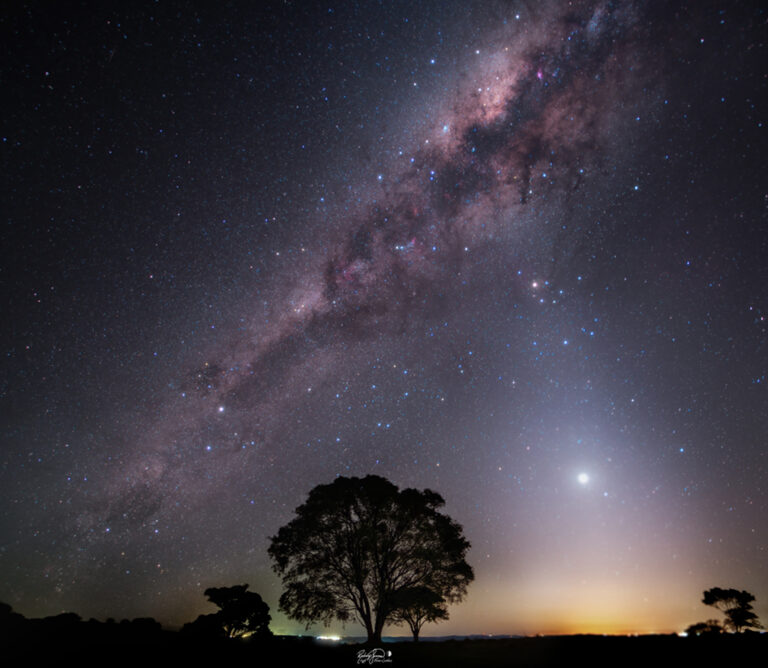十二月的仲夏夜
2023年12月23日 A December Summer Night Image Credit & Copyright: Ian Griffin (Otago Museum) Explanation: Colours of a serene evening sky are captured in this 8 minute exposure, made near this December’s solstice from New Zealand, southern hemisphere, planet Earth. Looking south, star trails form the short concentric arcs around the rotating planet’s south celestial pole positioned just off the top of the frame. At top and left of center are trails of the Southern Cross stars and a dark smudge from the Milky Way’s Coalsack Nebula. Alpha and Beta Centauri make the brighter yellow and blue tinted trails, reflected below in the waters of Hoopers Inlet in the Pacific coast of the South Island’s Otago Peninsula. On that short December summer night, aurora australis also…



